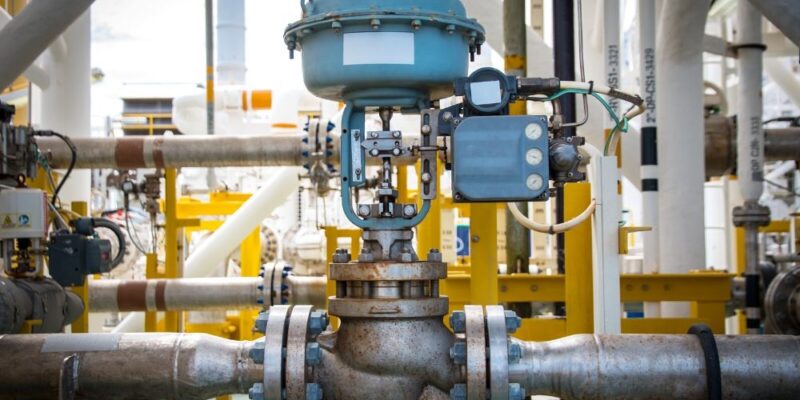Industrial control valves play a crucial role in adjusting the flow of liquids or gases within a system, enabling precise control and ensuring process stability. They find extensive applications across various industries, including chemical, oil and gas, manufacturing, and power generation. Along with insulation and protection elements, heat exchangers, tanks, and connectors (such as hoses and pipes), industrial control valves form the integral components necessary for the efficient and precise control of fluid and gas movement within industrial processes.
In this comprehensive blog post, we will enter the world of industrial control valves, examining their different types, applications, and the significance of selecting the appropriate valve for specific tasks. Additionally, we will explore best practices for maintaining and troubleshooting these valves, as well as their numerous advantages in industrial processes.
What are industrial control valves?
Industrial control valves are a type of valve used to regulate the flow and pressure of industrial liquids, gasses, and steam. They are often automated with electric or pneumatic actuators, making them highly efficient and accurate in controlling a process.
Control valves are essential for maintaining optimal performance in industrial processes such as oil refining, water treatment, power plants, chemical manufacturing, and more.
These valves are used to open, close, or partially obstruct a pipe or conduit to manage flow rates, pressure, and temperature. They are an integral part of any industrial process and can have a significant impact on the efficiency of production.
How do Industrial Control Valves work?
Industrial control valves regulate the flow of media in a system, such as water, oil, steam, and other liquids or gasses. They are usually operated manually or through an automated system and can control the speed of a process or the amount of flow in a system.
They work by changing the resistance to flow in a pipe. This is done by opening and closing the valve to increase or decrease the flow. Depending on the type of valve, this can be done mechanically or electrically.
When the valve is opened, the resistance to flow increases. When it is closed, the resistance to flow decreases. The opening or closing of the valve can be done using a manual lever or switch or through an automated system that can be set up to respond to specific conditions.
For example, in a water system, control valves like the Siemens control valves could regulate the amount of water flowing into a tank by controlling how much water is let in or out. A manual control valve may require someone to open or close it when needed manually.
An automated system, however, could be set up to respond to specific conditions, such as changes in temperature or pressure.
The valve is then connected to an actuator that will move the valve when the conditions have been met. This can either be done manually or through an automated system.
Overall, industrial control valves effectively regulate the flow of media in a system, helping to ensure that the right amount of material is going in or out at the right time.
What are the benefits of using Control Valves?
Industrial control valves offer a wide range of benefits for any industrial setting.
- They provide precise and reliable control of various systems’ pressure, temperature, flow, and liquid levels.
- The valves are relatively easy to maintain and can last many years with minimal repair and maintenance.
- They can also improve the overall efficiency of a system, reducing energy costs and improving productivity.
- In addition, they can help protect against system damage or environmental contamination due to leaking liquids.
- Control valves are also reliable and safe, as they are designed with fail-safe mechanisms that can shut off the flow of liquids if there is a malfunction. This helps to reduce potential safety hazards, as well as limit potential environmental damage.
The main components of a control valve
The Valve: The modulating element of the control valve is the valve itself, which contains a ball, plug, butterfly, or plug. This component controls the flow rate and pressure of the fluid.
The Actuator: The actuator is a device that moves the valve stem, allowing the user to control the flow rate and pressure of the fluid. It also helps ensure the valve is accurately opened or closed depending on the user’s desired settings.
The Valve Positioner: The valve positioner is designed to maintain the valve’s settings even when changes in process conditions occur. This ensures that the valve’s settings remain stable, resulting in more reliable and accurate operation.
What should I look for when purchasing an industrial control valve?
When purchasing an industrial control valve, there are several factors to consider.
Firstly, you should make sure that the valve you choose is designed to meet your needs and the specific requirements of your process.
Additionally, you should pay attention to the materials used in the construction of the valve and any certifications that might be associated with it. Consider the cost and availability of replacement parts, as this can ensure a reliable and durable product.
When looking at materials, look for corrosion-resistant options such as stainless steel or plastic. Depending on your system, you may also want to consider valves made of special alloys or other materials that offer higher levels of durability and performance.
Additionally, many industrial control valves, like the Bray Control valves, come with certifications such as CE, UL, CSA, or FM approvals, so make sure to look for these labels when selecting a valve.
Consider the cost of replacement parts and their availability. If a part is unavailable, the system will have to be taken offline while a new part is sourced, which could lead to downtime and disruption to operations.
To ensure that your system runs smoothly and uninterrupted, it’s important to select the Belimo control valves that come with widely available replacement parts.
Conclusion
Industrial control valves are an invaluable tool for controlling the flow of fluids in industrial applications. They offer many benefits, including improved efficiency, safety, and accuracy.
When selecting an industrial control valve for your application, it is essential to consider the type of valve, size, material, and other features.
With the right valve selection, you can ensure that your system operates smoothly and reliably. With the right maintenance and care, industrial control valves can last many years and provide reliable performance.














Comments